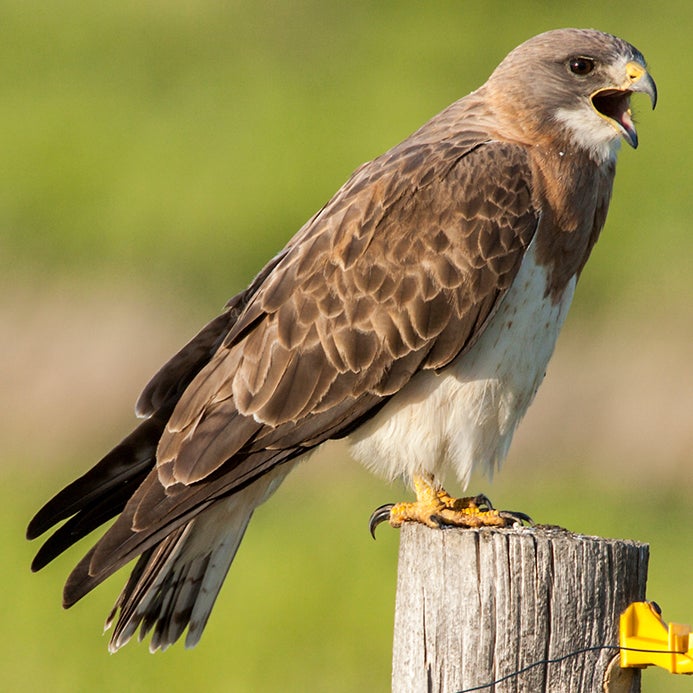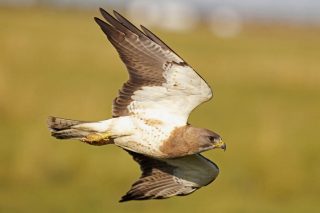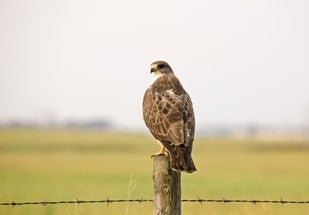
General Information: A classic species of the Great Plains and the West, Swainson’s Hawks soar on narrow wings and perch on fence posts and irrigation spouts. These elegant gray, white, and brown hawks prey primarily on rodents and insects.
Category: Focal species
Surface Water Needs: None
Federal Listing Status: None
State Listing Status: Threatened
Potential Conservation Actions:
- Develop grazing plans
- Plant natives
Fun Fact
Swainson’s hawks have one of the longest migrations of any American raptor – forming flocks of hundreds or thousands to travel to Argentina beginning in the fall of each year.
Habitat
Generally, Swainson’s hawk habitat consists of large, open, undeveloped landscapes. These include grasslands, agricultural lands (especially alfalfa), low-density shrublands, and desert habitats that have sparsely distributed trees for nesting.

Grasslands

Desert

Low-density shrublands

Agricultural lands
Disturbance and Stressors
The largest threat to Swainson’s hawks is the loss of foraging, breeding, and nesting habitats. Other threats include energy development, infrastructure and other human development, disease, pesticides, and electrocution.

Habitat fragmentation

Human development

Pesticide applications

Solar energy development


Sources: allaboutbirds.org, Bechard et al. 2020, California Department of Fish and Wildlife, Estep 1989
Photo credits: Mary Kay Rubey, Mark Williams (via Audubon), nationalzoo.si.edu